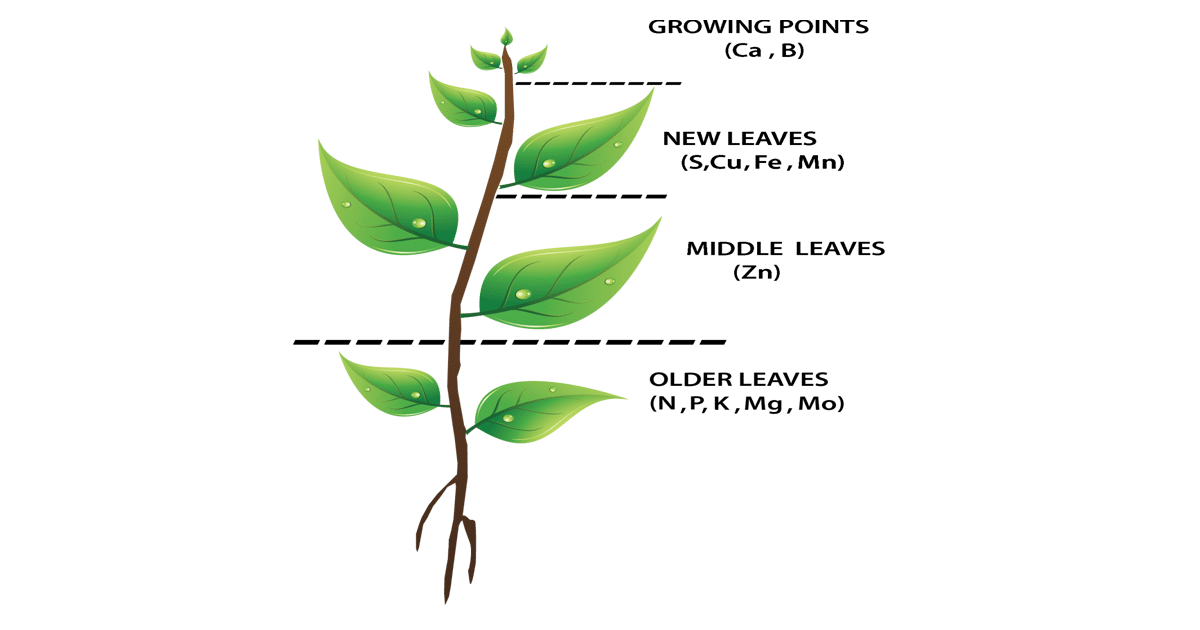- شما هیچ آیتمی در سبد خرید خود ندارید
- قیمت کل: 0 تومان
PRIMARY/MACRO NUTRIENTS
The primary plant nutrients are nitrogen (N), phosphorus (P), and potassium (K). These essential plant nutrients are required in higher quantities than elements that fall into the other two categories. Also, each of these three elements performs crucial functions in plant biology.
Nitrogen (N)
-
- Necessary for formation of amino acids, the building blocks of protein
- Essential for plant cell division, vital for plant growth
- Directly involved in photosynthesis
- A necessary component of vitamins
- Aids in production and use of carbohydrates
- Affects energy reactions in the plant
Fertilizer Sources: Anything with the words “ammonium,” “nitrate,” or “urea.” Also manures
Phosphorus (P)
-
- Involved in photosynthesis, respiration, energy storage and transfer, cell division, and enlargement
- Promotes early root formation and growth
- Improves the quality of fruits, vegetables, and grains
- Vital to seed formation
- Helps plants survive harsh winter conditions
- Increases water-use efficiency
- Hastens maturity
Fertilizer Sources: Anything with the words “phosphate” or “bone.” Also greensand.
Potassium (K)
-
- Carbohydrate metabolism and the breakdown and translocation of starches
- Increases photosynthesis
- Increases water-use efficiency
- Essential to protein synthesis
- Important in fruit formation
- Activates enzymes and controls their reaction rates
- Improves the quality of seeds and fruit
- Improves winter hardiness
- Increases disease resistance
Fertilizer Sources: Anything with the words “potassium” or “potash.”
SECONDARY NUTRIENTS
The secondary nutrients are calcium, magnesium, and sulphur. The elements in this category of essential plant nutrients, although not needed in such high quantities, are necessary for plant health.
Calcium (Ca)
-
- Utilized for Continuous cell division and formation
- Involved in nitrogen metabolism
- Reduces plant respiration
- Aids translocation of photosynthesis from leaves to fruiting organs
- Increases fruit set
- Essential for nut development in peanuts
- Stimulates microbial activity
Fertilizer Sources: Anything with the word “calcium”; also gypsum.
Magnesium (Mg)
-
- A key element of chlorophyll production
- Improves utilization and mobility of phosphorus
- Activator and component of many plant enzymes
- Directly related to grass tetany
- Increases iron utilization in plants
- Influences earliness and uniformity of maturity
Fertilizer Sources: Anything with the word “magnesium”; also Epsom salts (magnesium sulfate).
Sulphur (S)
-
- An integral part of amino acids
- Helps develop enzymes and vitamins
- Promotes nodule formation on legumes
- Aids in seed production
- Necessary for chlorophyll formation (though it isn’t one of the constituents)
Fertilizer Sources: Anything with the word “sulfate.”
The micronutrients are boron, chlorine, copper, iron, manganese, molybdenum, and zinc. These plant food elements are used in very small amounts, but they are just as important to plant development and profitable crop production as the major nutrients. Especially, they work “behind the scene” as activators of many plant functions.
Boron (B)
-
- Essential of germination of pollen grains and growth of pollen tubes
- Essential for seed and cell wall formation
- Promotes maturity
- Necessary for sugar translocation
- Affects nitrogen and carbohydrate
Fertilizer Sources: Anything with the words “borax” or “borate.”
Chlorine (Cl)
-
- Not much information about its functions
- Interferes with P uptake
- Enhances maturity of small grains on some soils
Copper (Cu)
-
- Catalyzes several plant processes
- Plays a major function in photosynthesis
- Plays a major function in reproductive stages
- Indirect role in chlorophyll production
- Increases sugar content
- Intensifies colour
- Improves the flavour of fruits and vegetables
Fertilizer Sources: Anything with the words “copper,” “cupric,” or “cuprous.”
Iron (Fe)
-
- Promotes the formation of chlorophyll
- Acts as an oxygen carrier
- Reactions involving cell division and growth
Fertilizer Sources: Anything with the word “iron chelate.”
Manganese (Mn)
-
- Functions as a part of certain enzyme systems
- Aids in chlorophyll synthesis
- Increases the availability of P and CA
Fertilizer Sources: Anything with the words “manganese” or “manganous.” Often required with zinc application.
Molybdenum (Mo)
-
- Required to form the enzyme “nitrate reductase” which reduces nitrates to ammonium in plant
- Aids in the formation of legume nodules
- Needed to convert inorganic phosphates to organic forms in the plant
Fertilizer Sources: Anything with the words “molybdate” or “molybdic.”
Zinc (Zn)
-
- Aids plant growth hormones and enzyme system
- Necessary for chlorophyll production
- Also necessary for carbohydrate formation
- Necessary for starch formation
- Aids in seed formation
Fertilizer Sources: Anything with the word “zinc.”



